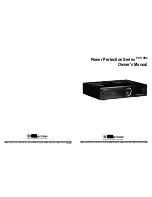
15.10.2
Application
GUID-D51EE866-71B6-4D14-B4E2-241128DE4A97 v2
The main purpose of line protection and monitoring IEDs is to provide fast,
selective and reliable operation regarding faults on a protected line section.
Information on distance-to-fault is more important for those involved in operation
and maintenance. Reliable information on fault location greatly decreases the
downtime of protected lines, and increases the total availability of the power
system.
Transmission lines are typically made of single type of conductor. If a transmission
line is made of more than one section, the line parameters are different for each
section, and the set-up cannot be considered as one single line. Fault location
algorithms for a single line will thus not meet accuracy requirements in railway
supply system. This can be explained by considering an example of transmission
line with 3 sections as shown in the figure
Source A
1
2
3
RFLO
Source B
IEC15000299-1-en.vsdx
IEC15000299 V1 EN-US
Figure 165:
Single line diagram with three line sections
For example, consider a case where the line angle of line 1 is 70 degrees, line 2 is
55 degrees and line 3 is 45 degrees. The area that remains between line sections 1,
2, 3 and the sum of the three line sections denotes inaccuracy (see figure
).
Thus summing up of the line parameters and considering it as one line should not
be done for fault location algorithm.
Section 15
1MRK 506 375-UEN A
Monitoring
406
Railway application RER670 2.2 IEC
Application manual
Summary of Contents for RELION RER670
Page 1: ...RELION 670 SERIES Railway application RER670 Version 2 2 IEC Application manual ...
Page 2: ......
Page 22: ...16 ...
Page 48: ...42 ...
Page 70: ...64 ...
Page 80: ...74 ...
Page 100: ...94 ...
Page 210: ...204 ...
Page 364: ...358 ...
Page 384: ...378 ...
Page 468: ...462 ...
Page 494: ...488 ...
Page 504: ...498 ...
Page 505: ...499 ...












































